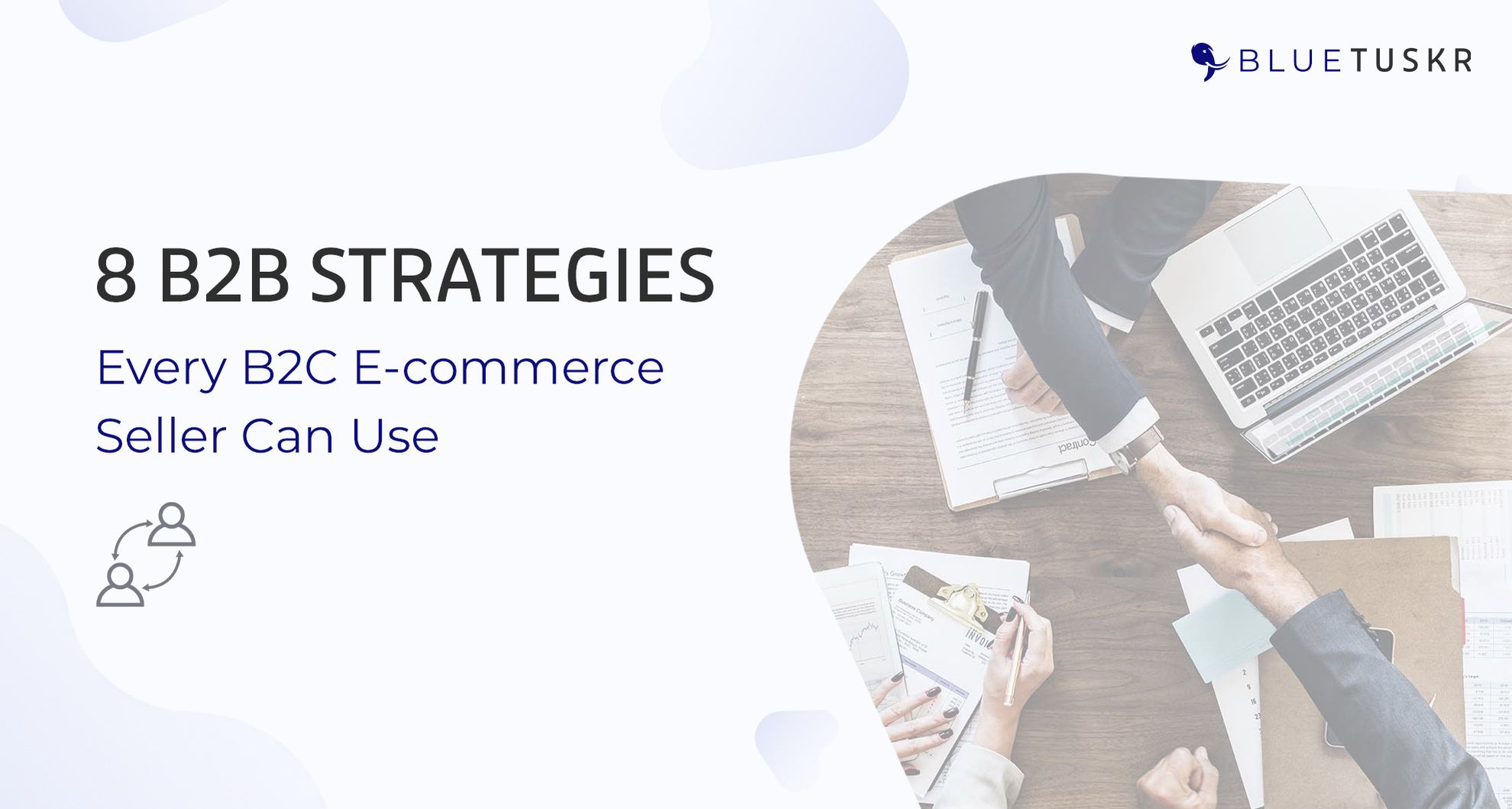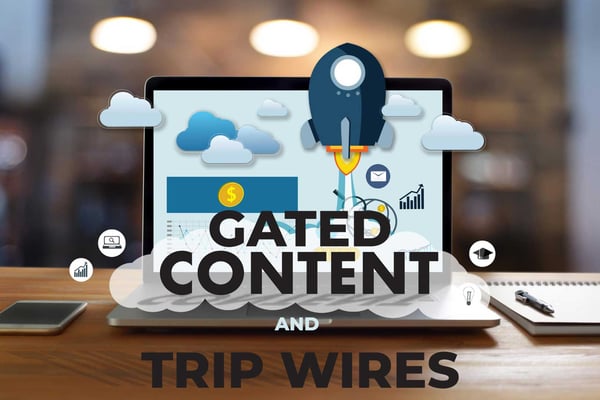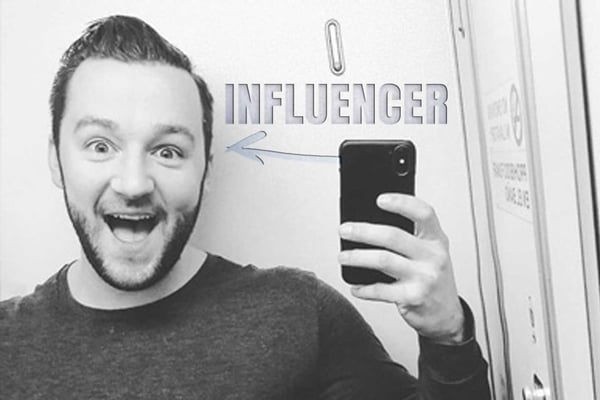
8 B2B Strategies Every B2C E-commerce Seller Can Use - Updated 2023
Do you often find yourself jealous of all of the cool things companies seem to do for other companies?
Lead generation webinars, high-profile Founders, fancy LinkedIn posts, company partnerships, the list is endless. Businesses who sell to other businesses get all of the fun.
At least, that’s what we’re trained to think.
Why is it e-commerce sellers can’t use these tactics to target the average consumer? Is it true that consumers won’t react the same way to these strategies that businesses typically do? Should sellers even bother trying these marketing tactics or should they stick to the rivers and the lakes that they’re used to?

Why Should E-commerce Sellers Try B2B Strategies?
Every company, every brand and every product are incredibly different. What isn’t different is a majority of the strategies used by e-commerce sellers to bring in more customers and drive more sales. The problem with that is these standard strategies can go stale to the average consumer. You’re essentially being punished for another brand’s poor marketing.
That’s where thinking outside the box comes in. Sometimes guerilla marketing is the best marketing, but it’s not easy. You have to be very creative and tread lightly. Plus, guerilla marketing tends to do much better when it’s live and in person.
Well, what if e-commerce sellers adopted the same strategies B2B companies use? It would be different, it would stand out from the crowd, and it could in-turn bring in much more likely customers than you may have ever thought of.
It’s not fair for businesses who sell to other businesses get to have all of the fun, that’s why we made this list of 8 different common B2B strategies e-commerce can leverage as well. However, we have a guide to lead you in starting your e-commerce business.

Live Webinars
The term webinar is getting a bit overplayed, but the concept of a live online event still works wonders for B2B companies, so how can an e-commerce seller leverage it? Simple. Think outside the box.
The goal here is to bring your audience into one place where you can control the conversation for an hour or so. You need to provide value, but you don’t ever want it to be a sales pitch, you simply want to keep it entertaining and informative.
Webinars Example #1
Let’s assume your product line is picture frames. Surely you couldn’t do a webinar, right?
Wrong.
Have a well-known interior designer offer to do a free webinar for your customers. 15 - 20 minutes could be a typical webinar of how to design a wall in your home to be aesthetically pleasing, then the remainder of the webinar your host could allow customers to join and have them give live interior design advice. Of course, you’ll want to close with a discount or something to get the audience to act on a purchase quickly.
Webinars Example #2
What if you owned a company that sold college football memorabilia? This is an easy one.
Find out which team is the favorite among your current customer base and ask a coach from that team to do a live interactive fan webinar. They can answer questions about the upcoming season, opinions on other teams, and more.
You don’t need to focus on your entire customer base to host a webinar. You can hone in on a segment of them and offer them a fun experience they normally wouldn’t get the opportunity to do.

Gated Content and Trip Wires
We’d be lying if we didn’t mention, as a B2B company, even we’re tired of eBooks and White Papers, but let’s be honest, they can still work very well. They even work great for e-commerce sellers, you just need to be creative. It also doesn’t have to be a download like that, it could also be a quiz or a calculator. Gated content is anything you can offer that requires an email address or more to unlock. You could even segment where it’s shown based on your website and cater it to the piece of content that viewer is looking at by using a segmented audience pop-up.
The main goal for gated content is to grow your email list. We all know that emails are the second most important KPI (next to sales of course), so why wouldn’t you want to focus on growing your email list with something other than a 10% off welcome discount?
Gated Content Example #1
In this scenario, let’s assume you’re in consumables and you sell hot sauce. The first thing you’ll want to do is send us some. We love hot sauce! Second, think of all of the things hot sauce can be used for. Wouldn’t it be great to offer an eBook for The Ultimate Guide to Cooking with Hot Sauce? Or maybe even 101 Hot Sauce Recipes for Any Party? The ideas are endless.
This could even be something that comes free with every purchase. The more value you can provide your customer or potential customer, the more they’ll be willing to shop with you again and again.
Gated Content Example #2
Now let’s say you’re in the beauty industry. You sell a ton of different kinds of moisturizers and lotions. Consider creating several pieces of content around sunscreen, summer, going to the beach, etc. You don’t need to have a big fancy eBook for this, consider offering a one-page PDF of a checklist of things to bring to the beach. This would work great as a pop-up on those pieces of content.
You could custom design a list of everything someone would want to take to the beach (including your moisturizer and sunscreen of course) but it’s something quick and easy for you to create and for your potential customers to download.
Always think about creating custom pieces of gated content that cater to specific needs and specific product lines that you may have. You don’t have to create something that all of your customers will love, only some. Segment your audience correctly and this could be a game-changer for your email list!

Labeling the Founder as an Influencer
Who doesn’t know a B2B company with a Founder or CEO who is labeling themselves and the most knowledgeable in the industry to convince potential clients to work with them? Hell, even our Founder is doing it. This is something that has to be done very carefully, but can also be very lucrative for e-commerce sellers.
This strategy can work wonders for certain sellers who’s audience are obsessed with their industry. If you sell a product line where some of your customers live and breathe this lifestyle, this is a great opportunity to elevate your brand by elevating your own personal brand too.
Founder Influencer Example #1
Now we’ll assume you sell drum accessories. Drummers are obsessed with drumming. They’re always watching videos, constantly tapping, talking about the beat of a certain song, needless to say, this industry is perfect.
As the Founder of a company that sellers drum accessories, you could of course label yourself as the go-to person who knows everything there is to know about drums. How to tune them, the best wood to use, the best sticks to use. You could even do videos on how to select the right equipment, you don’t even need to be a drummer! If you can speak the language and develop your name in the community, customers will immediately assume your products must be the best because this is what you live and breathe.
Founder Influencer Example #2
One of our favorite clients sells grilling accessories. Although this is similar to the drumming example above, we’ve incorporated the same concept with them. Now, this founder spends his time grilling outside, taking pictures, explaining what he used, and describing the taste. This guy is living the dream now and his audience is almost bigger than his brand’s!
We sometimes find that e-commerce sellers like to stay behind the scenes and watch their company run itself which is very understandable. However, if you’re looking for new ways to get your product out there, consider branding yourself! You’re your own biggest fan (next to mom).

LinkedIn Posts and Advertising
LinkedIn to sell products? That can’t be true.
Well, it is. And we’ve seen it happen gloriously!
Yes, LinkedIn caters more towards the B2B market but it’s not just B2B, it’s business in general. The platform is flooded with SaaS companies and “gurus” that when a product ad is shown to them it can actually spark more interest than you may usually get on other platforms.
LinkedIn Example #1:
You’re a seller of electronic equipment and cameras. There are thousands of people on Linkedin who do videos on YouTube, or maybe they’re building their own brand and are doing live video, or maybe you even have microphones, who doesn’t have a podcast these days?
Even though your ad copy may be typically catered towards a traditional consumer market, think about adjusting your copy and catering to the types of people that are on LinkedIn.
LinkedIn Example #2
What if we gave you an example of something a little less obvious? Maybe you’re in the apparel business. Do you sell any clothing that can be used in a business setting? Not only could you be running ads to the LinkedIn audience but you could even develop your own audience.
LinkedIn is all about networking and helping each other grow. If you look good, you feel good. Why not share some of your customer’s successes on your own page congratulating them on something they may have achieved and then mentioned the great clothes they were wearing while it happened?
The overall key with LinkedIn is to remember, the people you’re targeting there versus let’s say Facebook is the exact same people, they’re just in a different mindset so you need to adjust your approach to cater to that.

Partnerships With Other Companies
Partnering with other companies that compliment you is a very easy way to reach a new audience and we’re always surprised by how many e-commerce sellers don’t try this more often.
This is a very common practice within the B2B world. Similar and non-competitive, businesses will share blog posts on each other’s websites, take over each other’s Instagram accounts, co-write eBooks, and much more. Why can’t e-commerce sellers do this? They can.
Partnerships Example #1
Do you sell coffee? Or maybe coffee accessories? What doesn’t go well with coffee?! We’ve seen some e-commerce coffee brands partner with different milk brands, some we’ve seen will partner with pastry companies, in fact, we’ve even seen some partner with radio stations you may often hear in coffee shops.
If you think about who isn’t competing with you but targeting the same audience, those are the best companies to partner with!
Partnerships Example #2
Apparel companies can be the easiest of them all when it comes to partnering with other companies because everyone owns more than one type of clothing line. Consider finding other apparel sellers that compliment your product line, you can easily do blog posts or shared social media posts where you match up an article o clothing that goes well with an article of clothing of theirs.
The concept of partnering with other companies is very simple. It can really allow e-commerce sellers to not only reach a new audience but even provide more value to their existing audience. We’ve even seen some sellers do promotional discounts in their newsletter for another company. If you can develop a partnership like this with another e-commerce seller, the ideas are endless.

Informative Newsletters
There is no need for every newsletter you send out to have a discount on it. In fact, if you do that too often, it can actually hurt your sales as costumers will just wait for you to send your next newsletter before they buy. However, if you don’t send emails enough, customers can forget that they subscribed to you and end up unsubscribing or spamming you next time you send an email.
This is where using you e-commerce focused email marketing software to send informative newsletters comes in. At this point, you’ve already gained their email address and they have either purchased with you or are about to. So, if you’re not going to offer a discount you need to provide value. B2B companies send out newsletters all of the time with news, updates, or blog posts they may have written lately, so why can’t e-commerce sellers? Again, they can.
Newsletters Example #1
If you are trying to reduce your CAC (Customer Acquisition Costs), we can assume you’re investing in SEO which means you’re pumping out a lot of content. Let’s say you sell non-OEM Apple accessories. Chances are your customer base is obsessed with Apple and always want to know what Apple is up to and what new products or features they have coming out.
Why not set up a newsletter that sends out content on a weekly basis about fun features they may not know their iPhone did? Or maybe a new rumor about a new Apple Watch coming out. It will keep your audience engaged and enlightened so when that new product does come out they’ll be ready to open your email.
Newsletters Example #2
Maybe you’re in the pet supply industry. This one is simple. People love their pets and always want to make sure they’re giving their furry friends the best lives they possibly can. This audience is perfect for some informational newsletters.
We have a client now who sends out a newsletter twice per month with 3 - 4 articles we’ve written that we know their audience would love. We make the newsletter fun and engaging but we don’t offer any discounts. With that, we’ve found that when we do send out a newsletter with a discount, the open rate is significantly higher because we’ve kept their list warm.
The trick to informational newsletters is to make it fun and entertaining without boring your customer base. You don’t have to send them every blog post you write, but sending them a well-crafted email now and again to remind them that you exist never hurts.

In-Person Conferences and Meet-Ups
Conferences can be tricky as you need to have a pretty hefty audience to make sure it’s worth your time, but you can also start with meetups to test the waters. Although this is a common marketing strategy for some e-commerce brands, most don’t utilize it and they absolutely should.
As e-commerce sellers, we sometimes tend to hide behind our computers while we work but if your customers can put a face to the company their buying from, they are much more likely to become evangelists of your brand and bring in even more customers for you.
Conferences Example #1
The most obvious example is hobbyists. If you sell remote control cars, who wouldn’t love to meet up with other enthusiasts who did cool things to their cars and want to show it off? A meet up (or even a race/remote control car show) would be amazing for some in-person contact. You could even use the opportunity to do some market research with your current customers.
Live events may not bring in millions of dollars in sales, but the relationship and the word-of-mouth you’ll gain from the customers who attend will be well worth the investment in getting the event together.
Conferences Example #2
What if your product line caters to a wide audience? Maybe you sell drink coolers? A wide range of people use that type of product. The trick here is to segment that audience into a group that uses your product all of the time or during a very important time to them. In this case, let’s say tailgating.
Tailgating could be for any sport, but what if you hosted a traveling event where you visited certain cities and held a tailgating contest. Who says there has to be a game going on to tailgate? Rent out a large parking lot and host a tailgating event for all sports fans to join in.
Live events like this can not only be great guerilla marketing and break away from the norm but it gives you the opportunity to be face to face with your customers, see how they use, and probably get some free market research out of it. It’s win-win for you!

Podcasts
Podcasts are growing in popularity in almost all B2B industries but very few e-commerce companies have taken advantage of it. To be honest, sellers are running out of time as almost everyone seems to have a podcast now.
Podcasts are great for targeting your die-hard customers in a new way. Remember that not every marketing strategy you do is going to have a direct ROI. Some things you’ll need to do for branding, even if they’re as inexpensive as a podcast.
Podcast Example #1
The difficulty with podcasts is the lack of visuals, so your podcast and your product line need to be something that can be talked about and doesn’t have to be seen. So, let’s assume you’re a seller that sells sports equipment. You have a couple of options, you could spend the money to sponsor a sports talk show, or you could start your own and control the message. Granted, not everyone who listens to sports talk shows actually play sports, but if you can brand it correctly and bring in a big enough audience, you’ll be able to attract all of the above.
Starting a podcast is simple, all you really need is a nice enough microphone and you can get started. If you want to take it up a notch you can even buy a camera and add that content to YouTube as well, it’s that simple now. You could even hire an e-commerce focused virtual assistant to replicate all of the content for you.
Podcast Example #2
A podcast we’re still waiting for an e-commerce seller to create would be someone who sells barware. The podcast could be based on reviewing new cocktails that listeners send in. You could create them and taste them live on air. After a few of these, this podcast would get a ton of traction from the laughs it would get. But if throughout the episode you mentioned the products you sell that you used to make the cocktails, it could bring in a lot of sales and entertainment.
Something like this would cater to a much wider audience but it has the potential to bring in a lot of listeners if it’s not too sales-y and kept entertaining.
In many cases, it can be less effective to start your own podcast than sponsoring a large enough podcast to see a return. At least if you start your own, you’ll own your audience for life, not just as long as the sponsorship lasts.
The moral of the story here is very simple. E-commerce sellers shouldn’t let B2B companies have all of the fun with their marketing strategies, they can implement the same ones, they just need to think outside of the box.
If you focus on a highly-engaged segment of your customer base and not on trying to please everyone, all of the B2B marketing strategies can work for your e-commerce business just as well as it’s work for them. Then, you’ll find yourself bringing in more and more sales without spending another dollar on ad spend. Interested in E-commerce CRO services? Contact our team at Bluetuskr, an e-commerce marketing agency.
Connect With Us
Recent Post

.png)










Tell us what you think!